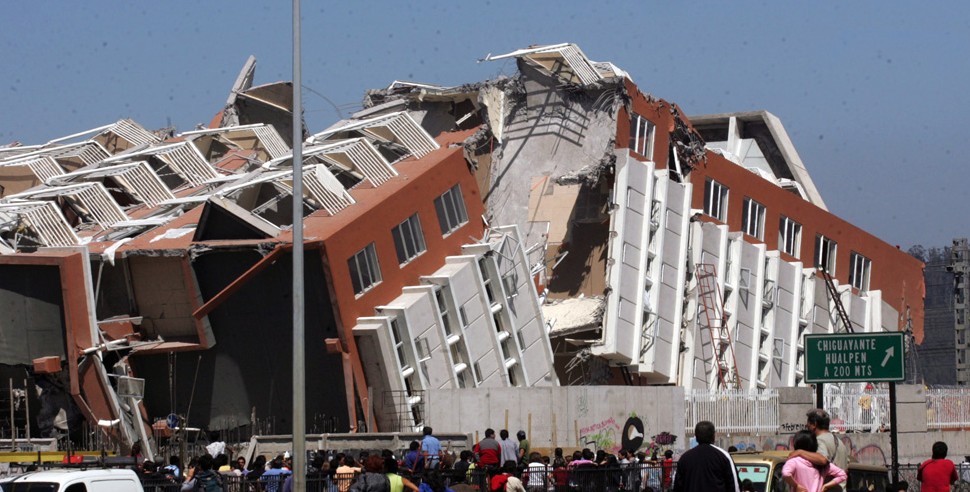
On Tuesday, April 17, at 10-10:30am an Earthquake hit the
Salt Lake Valley!
At least, that is what the Emergency Broadcast System, schools in the valley, and Emergency Response people will all be saying. A valley-wide drill was held in the hopes of preparing our cities for the “big one”, a large earthquake that may hit our homes one day.
My husband is trained in Emergency Response. Because of his job as an Engineer he must be aware of how an earthquake could affect the buildings, roads, and water systems of our city, and be on hand to help. As he shared with me the huge amount of time and effort being put into this day-long drill a little voice kept prompting me, “Are you prepared?”
For Family Home Evening we spent some time talking to our children about what to do in an earthquake or other emergency. It was a good lesson, with everyone more or less engaged and asking questions. Some questions were less than serious, but most of them showed they were truly interested in how to be prepared for every possible scenario.
For me, the little voice continued to ask, “Are you prepared?” Specifically, I felt the strong need to do something about the 72 hour kits. I put them together years ago for my family, but of course, they are nearly useless now. Food has expired, and my family dynamic is much changed.
So, after checking a few lists by the “experts” in preparedness, I quickly felt overwhelmed. No wonder I’ve been putting this task off!
Yet, again, the undeniable voice of the spirit did not leave me. I knew I should not ignore it.
So, I decided to make my own list, separated by categories. I opened up Microsoft Excel and began typing.
- A container to hold it in: I have small children, so I’m going to do backpacks for them. For my husband and myself, 6 gallon buckets which are waterproof, and can be used as washing bins, or even a toilet in an emergency.
- Water: 1 gallon per person, per day. I have six people in my family. That’s a lot of water. I’m going to start by buying water bottles, which are already sealed, and easily distribute the heavy water between packs.
- Food: I know what my kids like, and what they don’t. Keeping in mind the need for shelf-stable foods I picked granola bars, cup of noodles, fruit snacks, instant oatmeal, and dietary supplement drinks (Ensure) and figured out how much we would eat in three days. This was the category that stressed me the most, and yet it was easier than I thought it would be. I’ve decided to add these items little by little to my weekly shopping list until I have collected it all. Because I wrote it down and itemized it, I just have to follow my list. No more thinking.
Also, doing this today means that six months from now I will need to use and replace it. That is part of the commitment of 72 hours kits. Thankfully, I have no doubt my kids will be thrilled to eat all the snacks and food come October. I’ll pull up my Excel list again and restock, not re-think (unless there is reason to).
- Equipment: Utensils, matches, pocket knife, plastic zip-lock bags. In my research I found that the equipment list can get vast and overwhelming. I’m starting small, seeing what will fit in my kits and then adding later if I can or need to.
- Shelter & Comfort: Small tent, blankets, hats and gloves for the winter months of Utah.
- Clothing: This is another stress category for me. I’m going to simplify it with sweats for all-one size bigger, and add socks and underwear as well. This is another category that needs to be checked and updated every six months.
- Light: Flashlights (one for everyone), extra batteries, glow sticks, and matches and candles.
- Sanitation: Heavy duty garbage bags, tissue paper packets (to use as toilet paper), hand sanitizer.
- Hygiene: Soap, shampoo, toothbrush and toothpaste, comb, small towels, diapers and wipes for the baby, feminine hygiene pads, etc. All the little travel sizes, one for each pack.
- First Aid: A small first aid kit and manual.
- Morale Boosters: Coloring books, markers, travel games, decks of cards, hard candy, small stuffed animals for each child. I love the inclusion of moral boosters in a 72 hour kit. They will help keep kids (and parents!) calm, entertained, and happy. With all these supplies, the kids will see it as a great adventure, instead of something scary.
- Other: Safety pins, sewing kit, duct tape, rope, small scissors, whistle for each family member, hatchet, small shovel, coin purse with bills & coins up to $20, radio with extra batteries. This is another category that can grow with time.
By far, this is not a comprehensive list. I plan on adding to it in the future, but this is a place to start that feels do-able for me. Completing my 72 hours kits will take some time, but I’m starting now. Finishing and keeping it updated will be a challenge, but I’m doing it because the next time I hear that voice ask, “Are you prepared?” it will be worth the time and work I’ve spent to be able to answer with a calm, assured answer. Yes I am.
Do you have a 72 hour kit? What has worked for you as you’ve compiled yours and kept it updated? Here are some helpful sites. If you know of any others, please share.
http://www.ready.gov/basic-disaster-supplies-kit
http://www.solutionsforpreparedness.com (I used Barbara Salsbury’s book It’s Time to Plan not Panic to help me itemize my own list.)
I am bookmarking this! You’ve inspired me to get cracking on our own 72 hour packs. Thanks!!